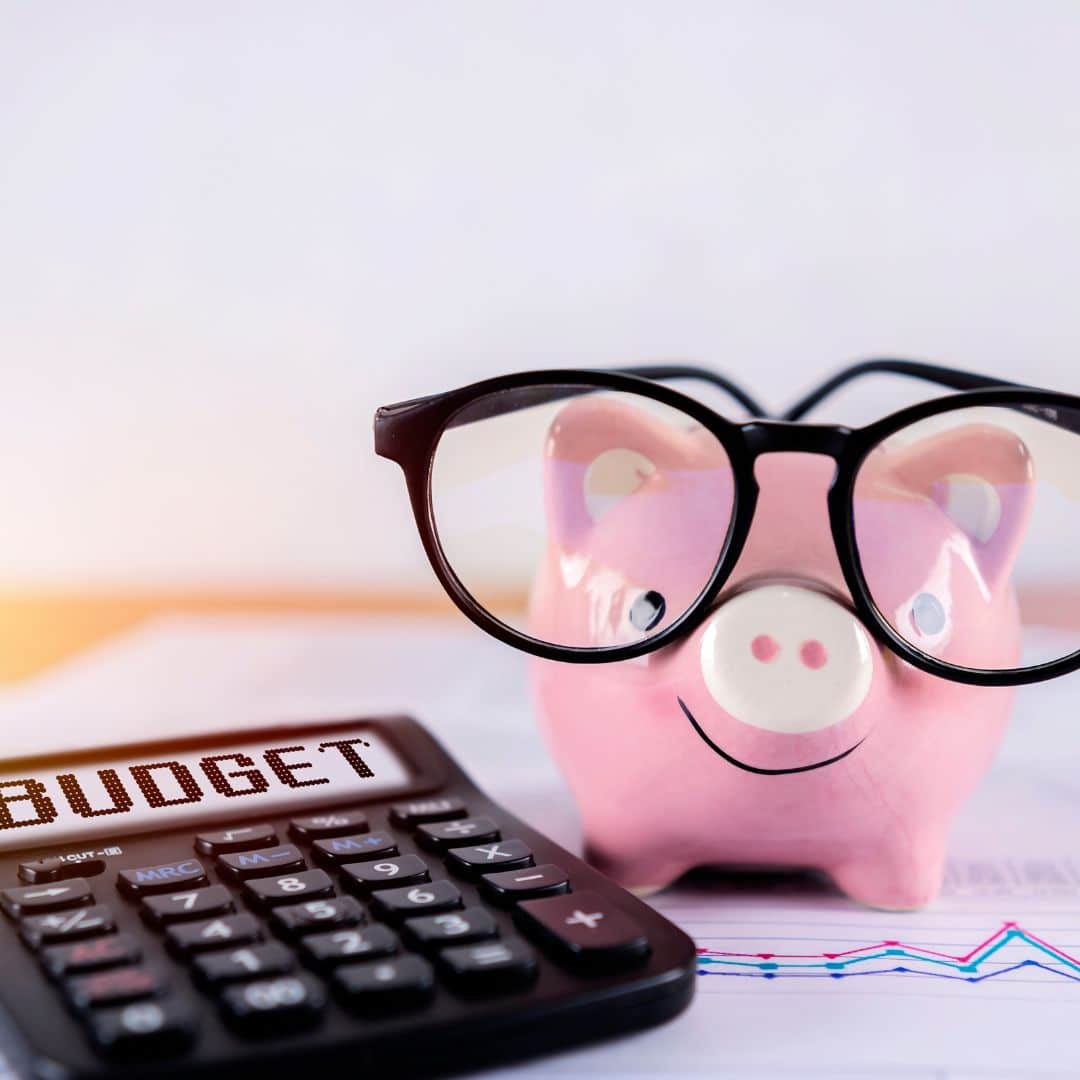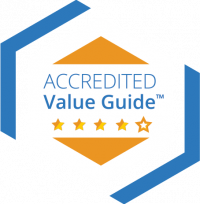You’ve put in the hours, the late nights, and missed out on precious family moments to build up your business, and now its time for a change.
Perhaps you’re considering retirement, or maybe you want capital to fund a new venture; whatever the situation, you’re considering selling up and moving on.
But how do you put a price on your business?
There are several approaches you can take to business valuation This article summarises some popular valuation methods and covers what you need to include when calculating your business valuation.
For decades, we’ve been brokering business sales, and working in corporate banking and Financial Director roles, so we know a thing or two about getting a fair valuation for a business.
Stick around to the end to find out the best way to get a professional valuation done for your company.
Let’s make a start.
Looking for some handy guides that will walk you through all that’s needed when preparing your business for sale? Check out the Resources section of our website.
Definition
A business valuation is a process of calculating the financial value of an entire company. It is a task you can do yourself, though using external specialists with experience in the undertaking will provide a better and unbiased figure guided by market knowledge.
The value is usually determined for the business as it currently stands, though you can get a projected valuation should you need one.
Why should I get a valuation?
You may think you know everything there is to know about your business: the ins and outs, its strengths and weaknesses. But we’d argue that you can’t understand everything about your business until you get under the skin of its true market value.
There are several reasons why you might want to get a business valuation too, and not all of them are about selling up:
– Investment
If you want to secure additional investment to grow or see you through a rocky patch, investors and lenders are likely to want to see a current business valuation.
– Asset protection
Insuring your business against threats like tax planning, legal challenges, or even the untimely death of a Director may require the provision of a current valuation.
– Entering a New Growth Stage (to Benchmark Performance)
If you perform a business valuation on an annual basis, you’ll have a method of measuring progress. This is true as a valuable business is an investable one, so conducting a business valuation can help you create better informed and more strategic plans. With the valuation details, you would know if it is in your best interests to work to increase the value of the business before finally selling – this article outlines 25 factors that will help you improve your business value.
– Business Sale
The primary reason to value a business is to assist in the setting of a selling price. Whether you are looking to sell to current employees or seeking an external buyer, an objective business valuation is the starting point.
– Exit Planning
What business valuation figure would give you the exit you need? If you ‘fail to plan, you plan to fail’. Your business is likely your most valuable asset, so understanding its current value lets you devise plans for increasing it – leading to a more successful business exit strategy that meets your goals. We call this the Freedom Point.
Now let’s examine what you should include in your business valuation.
What should I include in my valuation?
A business valuation should be more than just a simple sum of fixed assets. Of course, you’ll include the market value of all the assets in your business, like stock, property, and machinery, but other elements play a part too.
Most businesses have long-term financial liabilities that need offsetting against the total value of assets. So, put together a total of your long-term liabilities, and don’t forget to make an allowance for potential customer bad debt too.
If you’re valuing your business to sell it, any buyer will also want to understand long- term financial performance. Have you had one stellar year or ten? Providing evidence of a track record of profits can help to increase your valuation. This is commonly called goodwill.
Less tangible elements also affect the overall value of your business and should also be included. Does your company own any valuable intellectual property? Are there key staff members that would impact the business detrimentally if they were to leave?
The customers you supply may impact your business’s value as well. Maybe you have a premiere customer that potential buyers would jump at the chance to work with?
As you can see, many facets affect a business valuation, so unsurprisingly, there are plenty of different approaches to business valuation to accommodate the issues. Let’s consider four of them.
Approaches to business valuations
Before looking at more specific business valuation methods, let’s take a quick look at four broad approaches to business valuation; income, asset, market, and cultural.
– Income Approach
The income approach to business valuation looks to quantify the potential of future business income. After all, a buyer is interested in your future profits. That’s what they want to own. It’s a practical approach when you want to price your business based on anticipated future growth.
We recently sold a facilities management company. The buyer valued the business on a strong historical performance, paying 4x profits on completion. What really made the difference though was demonstrating, via reasoned forecasts, the profitability for the 3 years post sale. This pushed the total price to over 8x profits.
The income approach can also be helpful in situations where a business has intellectual property. Using this strategy, if you can quantify future royalty payments you will be able to demonstrate a current market value for the business.
– Asset-based Approach
The asset-based approach to business valuation is more of a cold accounting equation. It’s when you value your business based on the sum of its parts.
You might favour the asset-based approach if you operate in a capital intensive industry, or if your business has matured and there is limited opportunity for future growth.
The asset-based approach does not consider intangibles like goodwill and will potentially value a business at a lower price than a realisable market value.
NB _ Always consider the written down and market value of significant capital assets. On a recent engineering company sale we suggested a revaluation, which added 50% to the value of the machinery.
– Market Approach
The market approach to business valuation looks to establish your business’s value based on similar companies’ sales. It looks at past sales in your sector to determine a benchmark price.
The market approach relies on the principle of competition. The fundamental laws of supply and demand will help establish a fair price acceptable to the market.
NB _ An important point to note is that average industry prices are just that – averages. They will cover much higher and lower prices paid. This is where a professional valuation will help you – identifying your strengths and weaknesses, so that you can be within the “much higher” camp.
Recently, we sold two businesses in the same sector to a single buyer. The second business we sold got nowhere near the same multiple as the first, because the sales of the second business had fallen and it had no 2nd tier management team, leaving the buyer with more issues to solve.
– Cultural Approach
The cultural approach to business valuation attempts to combine common mathematical valuations with the impact of more ambiguous business elements.
Valuing a business is part science, part art. So, the value of institutional staff knowledge, motivation levels, and business culture can affect a calculated value. A well motivated team, driving the business forward towards a clear vision, is a better bet for a buyer.
The cultural approach attempts to put a hard number on these elements.
Business valuation methods
We’ve covered the different approaches to business valuation. Now, let’s look a little closer at some explicit methods.
You need a good amount of quite specific knowledge to embark on a business valuation. Even if you are calling in an expert for the job, it is usually helpful to be able to follow the thought processes involved.
– Entry Cost
The entry cost method of business valuation asks the potential buyer ‘how much would it cost you to establish a similar business?’
The amount arrived at needs to consider premises, staff, training, stock, capital equipment, and attracting customers. The price should also account for the time required to build up the new business to the same level as the one for sale.
When devising an entry cost valuation, you don’t have to match all business elements like-for-like but it should include the marketing spend necessary to build up the customer base.
A furniture business we helped had 20 years of radio advertising under their belt. It made them a recognisable name and customers were loyal. This gave them a business valuation beyond a basic entry cost.
If an entrepreneur could make a cost-saving by using more efficient technology or locating in a cheaper area, this can also be reflected in the valuation.
– P/E Ratio
The P/E (price to earnings) ratio is a business valuation method based on a multiplier of business profits after tax.
Take the value of your latest post-tax annual profit and multiply it by an applicable ratio for your business. The rate used will vary, depending on your business size and the market you serve.
While the P/E ratio is a valuation method customarily used for companies with publicly traded shares (you will see it quoted in the Financial Times), you can use it to arrive at a figure for private businesses too. The ratio is usually a number between 2.5 and 10, but beware as private companies tend to trade at a lower P/E ratio than public quoted ones.
So as an example, if your annual post-tax profits are £100,000 and your business has a P/E ratio of 4, your company would have a value of £400,000.
– EBITDA Multiple
Similar to the P/E ratio, this method is based upon profits; however, it’s more specifically Earnings Before Interest, Tax, Depreciation and Amortisation.
It is the most common method in the family owned business market.
The calculation of the true EBITDA does require some expertise. Profits require adjusting for the owners’ remuneration and replacement cost, fixed assets replacement policies, while accounting for the amortisation charge. The effect of working capital, cash and debt on the business value also needs accounting for.
If you go up against an experienced buyer (and they usually are), without understanding the above, then there is likely one winner in the negotiation!
As an example, a recent sale we helped secure was on a cash/debt free basis allowing for normalised working capital. We negotiated the terms that released £1.5m of additional funds to the seller, including a haggle on the morning of the completion that netted them an additional £50k, due to a late payment by a customer!
The moral of the story is that experience in business sales can significantly help move the dial on a sale in your favour.
– Rule of Thumb or Turnover Valuation
The rule of thumb is an informal, and rougher, method of calculating a business value. It relies on a calculation based on your sales revenue. It is most commonly used in sectors where gross margins and costs are presumed to be the same – high street retail and professional service firms are two examples.
You might also choose to use the rule of thumb to value a business if you haven’t completed a full year of trading as you can’t rely on annual accounts to confirm a profit figure.
It’s also a quick method to obtain a ballpark figure for an established business should the need arise.
The rule of thumb is a percentage figure of your annual revenue suitable for your trade sector. For example, if your yearly income is £1.5 million and you are an accountant, the multiple used will be 1 to 1.2, and your business would have a value of £1.5 to £1.8m. To learn more about the turnover valuation process, read this in-depth article.
However, be aware that a valuation given on turnover is usually superseded in the business sale process by one based on profits.
– Net Book Value
The net book valuation method is a calculated figure based on available hard numbers. Add up the value of all the assets on your books. Your property, outstanding debt, stock, machinery, and any other capital items, then deduct your total liabilities.
You need to have an accurate picture of your assets, accounting for any depreciation, inflation, and future liabilities to reach the right figure.
In all likelihood, the resulting valuation will be lower than other available business valuation methods, as it doesn’t account for the value of intangible assets such as goodwill (your profit stream) and intellectual property.
Net book value’s most common use is in distressed sales.
– Discounted Cash Flow
The discounted cash flow method of valuation seeks to quantify the future value of your business. Suitable for companies with predictable or growing earnings, it predicts future revenue and profit and calculates a value for future cash flow today.
When putting a price on future cash flow, you need to account for the difference in the value of £1 today and £1 in 10 years’ time. This is the ‘discounted’ element of the model.
Discount rates will vary. Inflation is one factor as it will reduce the value of future projected cash flow. Risk is another – the more reliable the forecasts the lower discount that will be applied.
This method is really useful when considering the future value of a fast growing business, or one that has just won new long term contracts. It allows the buyer and seller to agree on a higher value based upon what the seller is passing on, where this can be shown to differ significantly from past performance.
As you can imagine, some pretty complex equations are used to calculate a discounted cash flow valuation. Plus, as it is based on assumptions of future performance, is only a prediction of future value. The actual performance of your business could be greater or lesser, so earn outs are a common element of deals based upon this valuation method.
– The X-Factor Value
Most of the methods described above don’t take into account any ‘x-factor’ your business has. Do you have an aspect to your business that a cold accounting equation simply can’t value?
Maybe you have a long-term customer that a buyer would pay a premium to have the chance of supplying. Perhaps your business is so specialist that opportunities to acquire a company like yours are few and far between.
If you are a true business unicorn, then your company’s value could be appreciably higher than any figure arrived at through traditional valuation methods. (cutting edge tech companies often fit this description with early start ups selling for exceptionally high multiples because they’ve cracked open a new market).
These are called strategic valuations. Remember the two businesses sold to the same buyer mentioned earlier? Part of the difference was that the first acquisition was a platform for the buyer in a new sector. He got new skills and capabilities it would have taken years to acquire organically. The second sale was a bolt on, so was more based upon profits, also discounted for a higher risk as already mentioned.
Professional Business Valuation
Using a professional to help value your business is preferable to stumbling through the process yourself. Most buyers are either experienced or they have advisors looking for the best deal.
On a recent webinar an experienced buyer confirmed; “I only look at off-market deals, and with sellers who didn’t have advisors to get in the way. They only ruin it”.
From whose perspective, we’ll let you judge – a balanced deal was not on their mind.
A professional business valuation service can bring impartial expertise to the process. They’ll examine your financial reports as a starting point to calculate your Net Book Value, and then they’ll apply their knowledge and experience. Your Net Book Value isn’t the whole picture.
For example, an insurance company quantifies your house’s value based on the cost of bricks and mortar it would require to rebuild it. To a potential buyer, a nice neighbourhood, good local schools, and other factors combine to make it much more valuable.
Using their breadth of business sales knowledge, a professional business broker can place where your business fits in the market and how attractive it is to potential buyers. Ultimately, a professional valuation can determine a price that reflects true market value.
It’s often a combination of several business valuation methods that results in a figure that reflects the true value of your business. So to get the most accurate figure, and maximise your business value, you should seek professional advice.
How can I secure a good business valuation?
An old adage is that your business is only worth what someone else is prepared to pay for it.
And much like you can achieve a higher selling price for a used car with a full service history, having extensive documentation about your business will help you get a more favourable valuation too.
So, maintain an ongoing business plan – state where you currently are, where you want to be, and document future growth strategies.
Similarly, be meticulous with company records as well. Always have to hand three years’ accounts in a presentable format, employee and customer contracts, and keep your tax returns details and payment proofs together to show interested parties.
Make sure you have a formal asset register, kept up to date with depreciation calculations.
We know of a recent sale, where the seller got the equivalent of an extra two years profits by having all of this stuff (pre-diligence) organised, before he took the business to market. It really does help.
Also, look to risk-proof your business as much as you can. Ensure that the success of your business isn’t tied to the fortune of another company. If you are reliant on one customer, supplier or employee then you need to take action.
Start with a professional business valuation
Uscita are business brokers with a track record of selling businesses at the price they are worth.
We also offer a free business valuation service that three out of four businesses qualify for. We will evaluate the risks and the potential of your business as well as market insights.
Conclusion
When the time has come to move on from your current business, the first step is to get an accurate business valuation.
You can use multiple methods to value your business, and the ones you choose can depend on what you do and the sector you operate in. Avoid confusion and the dangers of undervaluing or overvaluing your business by getting help from experts.
At Uscita, business valuation is a full-time job for us. Contact us today.












